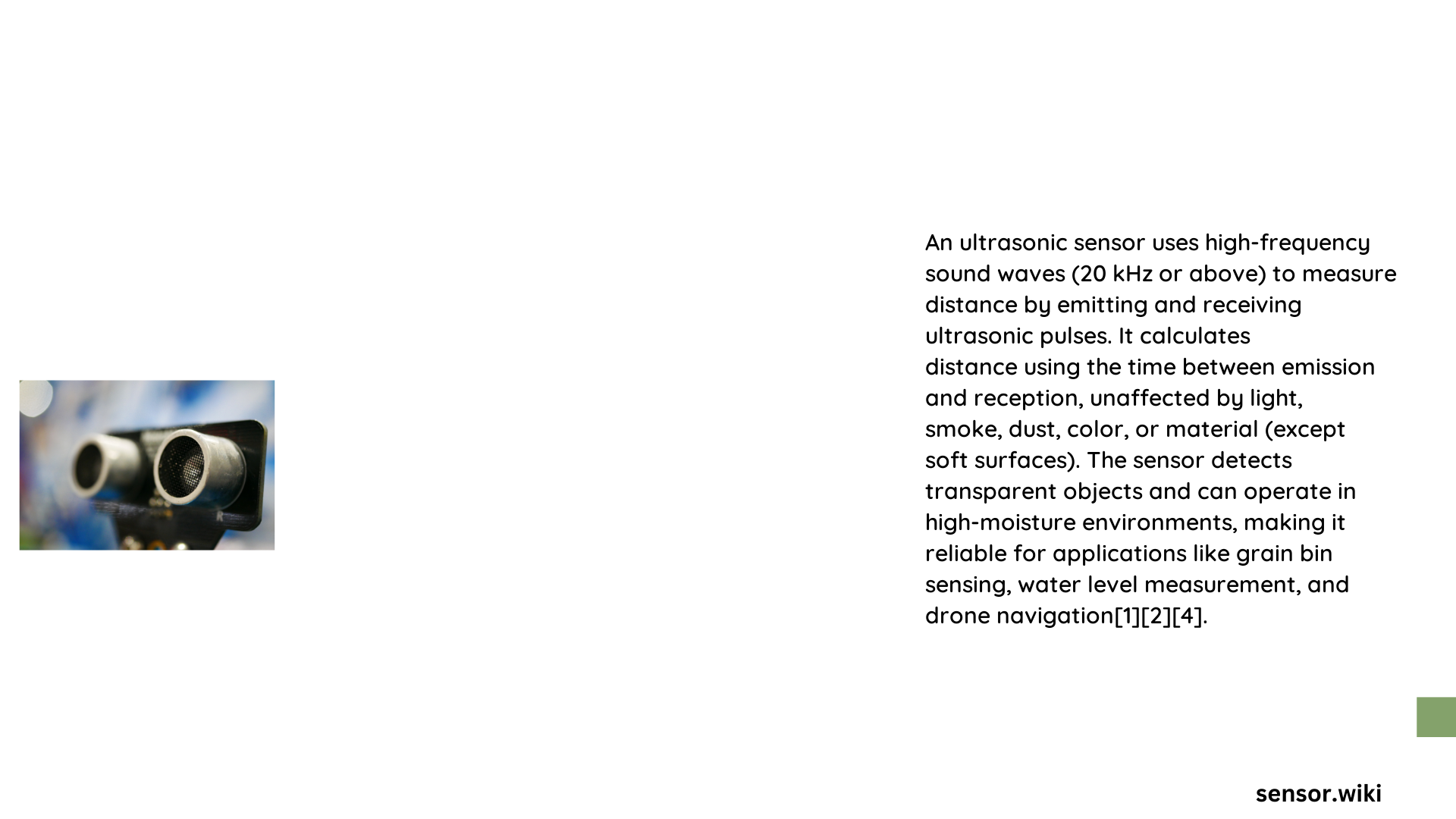Sonic wave sensors represent sophisticated technological instruments that leverage high-frequency sound waves to detect, measure, and analyze environmental parameters with remarkable precision. These advanced sensors transform acoustic energy into actionable data, enabling sophisticated measurement and detection capabilities across diverse industrial, automotive, robotics, and scientific domains. By emitting ultrasonic waves and analyzing their reflective characteristics, these sensors provide non-contact distance measurements, obstacle detection, and complex spatial mapping with exceptional reliability.
What Makes Sonic Wave Sensors Unique?
How Do Sonic Wave Sensors Operate?
Sonic wave sensors function through a sophisticated mechanism of sound wave transmission and reception:
- Wave Emission
- Transducer generates high-frequency sound waves
- Typical frequency range: 40-70 kHz
-
Waves propagate in specific directional patterns
-
Signal Reflection
- Sound waves encounter object surfaces
- Waves reflect back to sensor’s receiver
-
Time between emission and reception calculated
-
Distance Calculation
- Uses formula: L = (1/2) × T × C
- L: Distance
- T: Time elapsed
- C: Speed of sound
What Are Core Technical Specifications?
| Parameter | Specification Range |
|---|---|
| Frequency | 40-70 kHz |
| Measurement Distance | 2-400 cm |
| Temperature Tolerance | -20°C to 70°C |
| Power Consumption | 2-15 mA |
| Resolution | ±1 cm typical |
What Industries Utilize Sonic Wave Sensors?
Automotive Applications
- Parking assistance systems
- Collision avoidance technologies
- Adaptive cruise control mechanisms
Robotics Integration
- Obstacle detection
- Navigation systems
- Autonomous movement guidance
Industrial Automation
- Level monitoring in tanks
- Object detection
- Precision positioning systems
What Factors Impact Sensor Performance?
Critical performance influencers include:
- Surface texture of target objects
- Angle of sound wave incidence
- Environmental humidity
- Ambient temperature
- Potential signal interference
How Are Accuracy Metrics Determined?
Accuracy depends on multiple interconnected factors:
- Signal-to-noise ratio
- Transducer quality
- Signal processing algorithms
- Environmental stability
- Calibration precision
What Are Emerging Technological Trends?
- Integration with AI algorithms
- Enhanced miniaturization
- Improved signal processing capabilities
- Multi-modal sensor fusion
- Advanced material development
Practical Considerations for Implementation
When selecting sonic wave sensors, engineers must evaluate:
– Specific application requirements
– Environmental constraints
– Budget limitations
– Performance specifications
– Compatibility with existing systems
Future Technological Trajectory
Sonic wave sensor technologies continue evolving, promising:
– Higher resolution measurements
– Broader frequency ranges
– More sophisticated signal processing
– Enhanced durability
– Reduced manufacturing costs
Conclusion

Sonic wave sensors represent a critical technological innovation, bridging complex physical measurement challenges with elegant engineering solutions across multiple domains.
